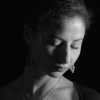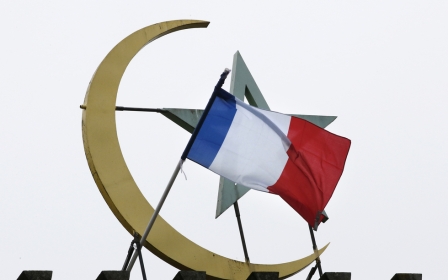Another country: How the suburbs see 'blue-eyed' France

My mother told me: “Watch Les Français, c'est les autres! [The French, it’s the others!], you will find it interesting.” And yes, I did. This documentary film made by Mohamed Ulad and Isabelle Wekstein-Steg, broadcasted on 3 February on the French TV channel France 2 (available in replay), offers us access to what they think, those that we talk about interruptedly but never hear, or too rarely: the youth of the suburbs.
The issues raised are multiple and would have deserved a documentary in several parts, giving everyone the chance to express themselves, with their doubts, hesitations, clumsiness and silences. But let’s trust the film makers and let’s consider that the chosen excerpts are emblematic of what the youth think.
The approach is interesting. The two directors are “Jew” and “Arab”, as they like to introduce themselves, confronting the students they address with a religious, linguistic or, worse, racialised identity, inevitably reductive, but which nevertheless allows the opening of the debate.
Who is the “Jew”? Who is the “Arab”? the two directors ask the students of a suburb high school. The prejudices come thick and fast. After all, doesn’t this way of starting the conversation calls for preconceptions? How can we define an “Arab” by his/her physical appearance only? Isn’t Arab(ic) a language first, which by definition can be heard but not seen? And how can we define a “Jew” - by his/her physical appearance only?
The students draw on an old myth which has inhabited us, peoples of Europe, for a long time, and still does. We could recognise the Jew thanks to the “bump on its nose”. Yes, it is like this that one of the students thinks he has found the key to the question asked. The “bump on the nose” is not far from the “crooked nose” of the “Jew” of our grandparents.
The two directors proceed by asking the youth about the stereotypes associated with the “Arabs” and the “blacks”. Here, too, they don’t take long to reply. They have a good knowledge of the colonial stereotypes that we inherited. We must congratulate ourselves for that. The black is the “monkey”, the Arab is the “thief”, and recently the “terrorist”, add the film-makers.
The impression that one gets from this documentary – which in its form and rhythm looks more like a TV report – is that these youngsters live in a ghetto. Not only a spatial ghetto, but a ghetto of the thought and the imagination. They are alone, cut off from the world, with their stereotypes and their fantasies, which they too rarely have the occasion to confront with the reality.
After listening to the litany of stereotypes about the Jews, “rich and stingy”, Isabelle Wekstein-Steg asks the students if they know some of these “Jews”. The answer is negative. They don’t know any, and those who do know some, they admit, are not like this.
Some of these youngsters are invited to listen to the testimony of a former wartime deportee in Drancy, the transit camp where Jews were held before being sent to the Nazi death camps. It is a nice initiative which allows them to hear the memory of others, a memory which is theirs also, as French people. But the problem is that most of them don’t feel that they are French. Their nationality is French but they assert and repeat it, they don’t feel French.
A reply which they dare to give because the filmmakers have managed to create a free space of discussions. They don’t restrain themselves, so the words are dropped: “The French, it’s the others!”
Why?
After all, they only say what they are presented with. In a way, Nadine Morano has already won. In their mind, yes, France is a “white-race” country, where they don’t have their place. Of what they are, nothing is said. All is distrust towards them, the language they speak at home (Arabic for some), the religion that their parents and/or themselves practice (Islam), their dual belonging to France and to the country of origin of their parents, their way of talking, of telling themselves, of relating to others and the rest of the society.
In fact, that did not escape the directors. Something has to be done. They must be introduced to French culture. Be educated about the “real” French culture. And here – awkwardness or betrayal of what they really think – the filmmakers invite some of these young people to attend a lesson of “manners” provided by a coach who masters all the codes of the upper bourgeoisie, even aristocracy.
The youth play along. They are eager to open themselves to learning. They are curious, but they don’t recognise themselves in this universe that they are told is “French”. It is a bit “dead”, says one of them. They all feel “stuck”. Indeed, the codes are obsolete, but the filmmakers awkwardly consider them as really French. Should the youth yield to them in order to be totally “integrated”? Should they mime these codes (because no, they have not been taught how to put the elbows on the table with “grace” at the age of 10 as can “the little pure French child from a good family”; they are able to learn but they don’t find it really useful) to have a chance to exist in that society?
Let’s think it was only a faux pas, still quite symptomatic of a France which can hardly think of itself outside the circles of a Parisian élite which perfectly masters the etiquette. We can however regret that this coach was not invited for dinner (we shouldn’t say “to eat”, the coach taught us in the documentary, because “eat” is a transitive verb suitable for animals) in the families of some of the students present at the table.
Why should this learning process always take place in one direction only? Why not go and live other manners of being French in France? The coach wouldn’t go to an exotic country, she would go to France, to another France, where the codes are socially and culturally different, but still French.
“Being French”, that is a definition which needs to be reviewed. Too many people in France still agree on a restrictive definition of what “being French” means. Because being French, it is also being “Black”, “Arab”, “Muslim”, “binational”, it is also speaking another language at home. Maybe it is up to us to widen our definition of what “being French” is, and then, eventually, they will feel a bit more French.
It is in fact on this point that the documentary ends. Some of these youth are made to cross the ring road, to go out of their spatial ghetto and, soon, of their imaginary ghetto. They are meeting “French people”, those who do not doubt their Frenchness, those that nobody ever questioned the fact that they are really “French”, and also those who, like them, live the ordeal of being born in France but having to prove that they are really French.
And in the free dialogue of these encounters, the youth, too, feel a little bit more French. They see in the other a pride of being French that they don’t know enough. And yet, they need this positive feeling of belonging in order to build themselves. They need to be able to live fully, without judgement, without discrimination, without reduction, without vexation, and without wounds. Because this young student who starts crying when talking about the caricatures of the prophet made by Charlie Hebdo, she feels first and foremost hurt. Hurt in what is precious in her eyes: the Muslim religion which she fragilely inherited from her immigrant parents.
So let’s stop seeing them as awful ignoramuses. First, they are young learners who need openness and watchful eyes to see what constitutes them – which is sometimes another language and another religion than those which prevail in France.
Thank you to the film makers for giving us the possibility to think and feel so freely with these youngsters. They need it, and we need it to develop projects which open us to them, and them to us.
This documentary has confirmed an idea that has been labouring in me for a long time. What about organising exchanges between the high schools of Paris and the suburbs, between the centre and the periphery, so that the stereotypes of some (they exist also) confront those of others. And that those two Frances which unfortunately are emerging separately manage to become only one.
But to that purpose, not everything can fall on civil society. It needs real political will.
- Dorothée Myriam Kellou is a journalist and film maker based in Paris. She has a master in Arab studies from Georgetown University, Washington D.C., and a master in International relations with a major on the Arab world from Sciences-Po Lyon, France. She contributes regularly to France 24 website “Les Observateurs”. Along her work as a journalist, she develops El-Rihla, a project of feature film on one of the last unspoken chapters of the Algeria war: the memory of populations gathering, taking the example of the story of her father.
The views expressed in this article belong to the author and do not necessarily reflect the editorial policy of Middle East Eye.
Photo: trailer off the documentary of Mohamed Ulad and Isabelle Wekstein-Steg broadcast on France 2 “Les Français, c'est les autres” (France 2).
The article was translated from French, and the original version was published in Middle East Eye French.
New MEE newsletter: Jerusalem Dispatch
Sign up to get the latest insights and analysis on Israel-Palestine, alongside Turkey Unpacked and other MEE newsletters
Middle East Eye delivers independent and unrivalled coverage and analysis of the Middle East, North Africa and beyond. To learn more about republishing this content and the associated fees, please fill out this form. More about MEE can be found here.





